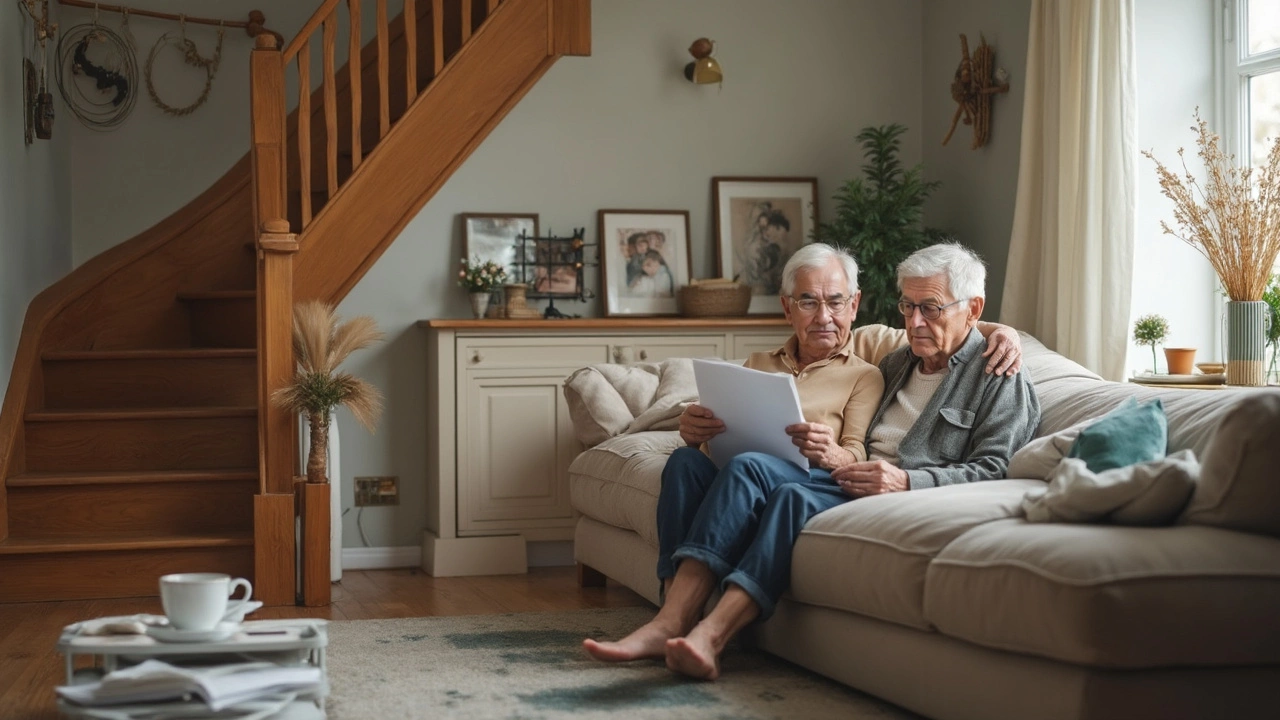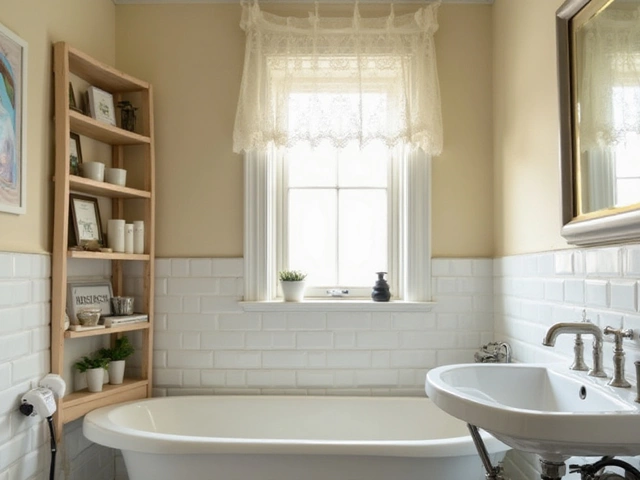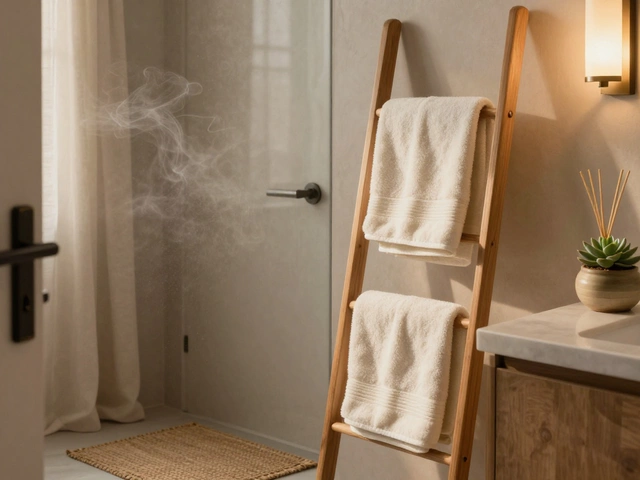Are Chairlifts Covered by Medicare? Here's What You Need to Know

Ever get stuck Googling whether Medicare will pay for a chairlift and just end up more confused? You're not alone. It's easy to assume Medicare swoops in and covers fancy gear like stairlifts, but the reality will probably surprise you. Getting straight answers can feel like chasing shadows, but don’t worry—I’ll break it down so you actually know what’s up.
Before you get your hopes up or put down any money, let’s clear something up right away. Medicare’s rules about chairlifts (and even stuff like special cushions) are way pickier than you’d think. People think that if it helps you get around or eases pain, your insurance will jump right in. The truth? Not so fast.
If you’re trying to help someone stay safe at home or just want to stay out of a nursing facility, every little bit of comfort and mobility matters—this is where coverage questions come in. You need specific guidance, not another vague webpage. Let’s get into what Medicare actually pays for, some clever tips to work the system, and a few lesser-known routes if plan A flops.
- What Does Medicare Actually Cover?
- The Truth About Chairlifts and Stair Lifts
- Cushions: A Surprising Alternative
- Tricks for Navigating Medicare Claims
- Extra Help: Grants, Discounts, and Private Solutions
What Does Medicare Actually Cover?
If you’re looking for a straight answer about Medicare and things like chairlifts, you’ll hit a wall with the fine print. Original Medicare (that’s Part A and Part B) covers “durable medical equipment”—stuff like walkers, wheelchairs, and home hospital beds. It does this if your doctor says it’s medically necessary. But here’s the catch: chairlifts for stairs aren’t on their list.
What does make the cut? Medicare’s list mainly includes equipment that you use inside your home and that serves a clear medical need. If it helps you move from room to room or keeps you safe (think mobility aids), there’s a chance. But if it’s fixed to your house—like a stairlift—it’s viewed more like a home renovation than a medical need. That means no go for coverage.
Let’s check what you’ll actually find covered under Medicare Part B:
- Manual and power wheelchairs
- Walkers and rollators
- Hospital beds and patient lifts (not to be confused with chairlifts for stairs)
- Lift chairs (but only the motorized lifting mechanism—not the whole chair itself)
- Some types of pressure relief or positioning cushions (if you have a specific medical diagnosis, like pressure sores)
Here’s a quick look at typical DME covered by Medicare, so you can see what’s in and what’s out:
| Equipment | Covered? | Details |
|---|---|---|
| Stair Chairlifts | No | Considered home modification |
| Lift Chairs | Partial | Only the lift mechanism covered |
| Wheelchairs | Yes | If medically necessary |
| Support Cushions | Sometimes | Requires specific medical need |
| Hospital Beds | Yes | Doctor's prescription required |
One last thing: Medicare Advantage (Part C) plans set their own rules. Some of them are a bit more flexible, so it’s worth checking if your plan sneakily helps with mobility stuff that Original Medicare won’t. Just remember to ask specifically about chairlifts and cushions—never assume it’s covered.
The Truth About Chairlifts and Stair Lifts
If you’re hoping that your Medicare coverage will take care of a stairlift or chairlift for your home, you might want to take a seat—preferably on a comfy cushion, because this answer isn’t what most folks expect.
Here’s the deal: Medicare treats stairlifts and chairlifts as “home modifications” rather than medical equipment. That’s a big difference. Home modifications—think ramps, widened doorways, grab bars, and stairlifts—aren’t usually covered under standard Medicare Part B. Even though a lift helps with mobility and lets you stay independent, Medicare sticks with pretty old-school rules about what counts as “durable medical equipment” (DME).
Durable medical equipment usually means items you can use over and over again, like walkers, wheelchairs, hospital beds, or even certain types of cushions. But stairlifts and chairlifts get the official ‘nope.’ Doesn’t matter if your doctor writes a letter or fills out forms—Medicare just doesn't list them in their DME catalog.
So, what happens if you try anyway? Your claim will almost always be denied. There are rare exceptions for some Medicare Advantage plans (those are the private plans that bundle in extras and sometimes cover things like glasses, dental, or extra home help), but you need to dig through the plan’s fine print or call a rep directly. Only about 7-10% of these plans even offer home modification help, and the benefits usually cap out at a few hundred bucks instead of the thousands it costs to install a stairlift.
| Chairlift/ Stairlift Cost | Standard Medicare Coverage | Medicare Advantage Option |
|---|---|---|
| $2,500 - $5,500 | No | Rare, up to $500 - $1,000 if available |
The bottom line? If you’re counting on Medicare for a stairlift or chairlift, it’s better to make other plans. Be wary of anybody promising “guaranteed” coverage or trying to sell you special paperwork. Medicare’s line on this just hasn’t changed. Still, don’t lose hope—there are other ways to get help, but it won’t be through regular Medicare.

Cushions: A Surprising Alternative
Here’s where things get interesting—while Medicare is stingy with chairlifts, it actually does cover certain kinds of medical cushions. If you’re dealing with pain or pressure sores from sitting too long, Medicare Part B steps in for what's called “pressure-reducing support surfaces.” This isn’t just about comfort; it’s about real health needs, especially for anyone who uses a wheelchair or spends a lot of time sitting.
If a doctor says you need a special cushion to prevent or treat pressure ulcers, that’s your best shot at getting Medicare to pay. The key here is having a solid doctor’s note backing you up. The cushion usually needs to be ordered through a Medicare-approved durable medical equipment (DME) supplier. You can’t just pick one off Amazon and send in the bill. Medicare-approved cushions include things like gel, air, and foam varieties—but it’s the ones labeled “pressure-relieving” that usually qualify.
Why does Medicare say yes to cushions and no to most stairlifts? Simple. Cushions have a direct impact on treating or preventing a medical issue, while stairlifts are seen as making life easier, not medically necessary. It can feel backwards, but that’s the logic.
- Gel cushions: Good for even pressure distribution. They’re used most for avoiding skin breakdown.
- Air (alternating pressure) cushions: Popular for people at very high risk of sores.
- Foam cushions: The most basic and often budget-friendly, but still better than a standard seat cushion.
According to a 2023 Home Mobility Study, about 28% of Medicare enrollees with mobility issues had a medical cushion covered, compared to less than 2% who ever qualified for help buying a chairlift. This gap shows how rare lift coverage is, but how accessible cushion help can be if you qualify.
Bottom line? If you’re hitting a wall with stairlifts, shift your focus to what Medicare is more willing to pay for. Cushions can make a real difference—and they’re way less hassle to get covered if you play by the documentation rules.
Tricks for Navigating Medicare Claims
Claiming anything through Medicare isn’t just a matter of sending one form and hoping for the best. With chairlifts and cushions, the hoops get especially tricky. If you want to give yourself the best shot at coverage—or at least avoid rookie mistakes—here’s what you need to keep in mind.
First, know that Medicare Part B generally covers Durable Medical Equipment (DME), but here’s the kicker: chairlifts for stairs aren’t considered DME by Medicare. Yep, even if your doctor says it’s necessary. Medicare usually only covers the lift mechanism as a “seat lift” (the thing that lifts you in and out of a chair), but not the kind that transports you up stairs.
- Always get a written prescription from your doctor for any mobility aid—even if it’s just a special cushion. The paperwork is half the battle.
- Make sure your supplier is enrolled in Medicare. Non-enrolled suppliers mean zero coverage—no exceptions.
- Ask your supplier for a “Medicare Assignment.” This means they accept what Medicare pays. Otherwise, you pay the difference.
- Double-check that the item code (called an HCPCS code) matches what’s approved by Medicare. A mismatch here is a common reason claims get kicked back.
If you get denied, don’t just give up. Medicare has a formal appeals process, and plenty of folks get approved on the second try. Keep copies of everything you send in—forms, doctor notes, receipts, emails. If the rejection letter isn’t clear, call the Medicare helpline and have them walk you through exactly why it was denied. Sometimes it’s as silly as a missing date or signature.
For better odds, consider working with a local Medicaid office or a non-profit that helps with durable medical equipment claims. They know all the shortcuts and what language Medicare likes.
| Step | What To Do |
|---|---|
| 1 | Get a doctor’s script specifying your need (include keywords like ‘mobility aid’ or ‘seat lift’). |
| 2 | Contact a Medicare-enrolled, assignment-accepting supplier. |
| 3 | Submit your claim with full documentation. |
| 4 | If denied, check reasons, fix errors, and appeal in writing. |
Don’t let the paperwork scare you off. Some folks spend weeks wrestling with documents, but those who stick with it and double-check every step usually do better when trying to get those Medicare benefits.

Extra Help: Grants, Discounts, and Private Solutions
If Medicare leaves you high and dry on chairlifts, you still have a few decent lifelines. There’s no need to fork out the whole cost if you know where to look. Here’s the lowdown on ways to get help for mobility aids at home, including some not-so-obvious options that real people have used.
Local and National Grants: Plenty of non-profits and community groups step up when insurance won’t. Organizations like the VA, local Area Agencies on Aging, and Rebuilding Together sometimes offer direct help with funding or install chairlifts for folks who qualify. The tricky part is each group sets its own rules, so you might need to try more than one. A home safety assessment from one of these groups can sometimes unlock new programs you didn’t know existed.
- State Medicaid programs: While Medicare usually doesn’t cover stairlifts, some state Medicaid waivers might. It depends on where you live (and a bit on luck), so it’s worth checking your local Medicaid office.
- The VA: Veterans or surviving spouses have special programs for adaptive equipment, including stair and chair lifts.
- Non-profit help: Easterseals, United Way, and disability resource centers often have one-off grants or can point you to groups that do.
Shop Smart: Discounts and Financing
- Some chairlift makers run seasonal promos or partner with dealers for discounts—always ask before you buy. You can sometimes snag a demo model for thousands off.
- Retailers may also offer zero-interest payment plans that spread the cost over a year or two. This helps you avoid a huge bill all at once.
- Insurance might not help, but using Flexible Spending Accounts (FSAs) or Health Savings Accounts (HSAs) can save money if your setup counts as a health expense—just check with your provider.
Private Solutions: Sometimes the fastest option is going private. Some folks crowdsource funds online through sites like GoFundMe, rallying family and friends. If you’re open to DIY, you can sometimes find like-new lifts from local listings or estate sales (just confirm they fit your staircase and come with reliable installation help).
| Resource | Type | Coverage/Assistance |
|---|---|---|
| VA Aid & Attendance | Federal/VA | Adaptive home equipment, including lifts |
| Area Agencies on Aging | Local Non-profit | Grants, home safety funding |
| State Medicaid | State Govt. | Partial/full cost via waivers (varies a ton) |
| Manufacturer Demo Sale | Private Vendor | Discounted chairlifts (20-40% less) |
The reality? Snagging a covered mobility aid outside Medicare takes a little hustle, but most families who get creative do find some help. Don’t take the first no—there’s usually a workaround if you keep digging.





